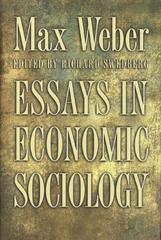A market consists of 10 individuals with different demand curves in a given period.
What is a calculation that could be used as part of the process to determine the market equilibrium
in that period?
A at each price add the quantities demanded by each individual
B at each quantity average the price that each individual is prepared to pay
C combine the price elasticity of demand (PED) and the price elasticity of supply (PES) at each
price
D determine the PED and multiply it by the quantity demanded.
(1) (a) A conventional single-index model is defined by: R, =Q+BR+6, where R. = return on security i a: B, = security-specific parameters = return on market index = zero-mean random variate Cov(e, ; () = 0 i j = 0, i =j Explain in detail the reduction in data required for mean-variance portfolio selection achieved by using the model. [4] (b) If the number of securities being analysed is 50, what is the difference in the number of data items required between the single- index model and the full covariance (Markowitz) model? [2] (ii) Explain the major conceptual difference between the single-index model and the basic Sharpe-Lintner CAPM. [3] (iii) Suppose that the CAPM beta of a security has been estimated from 60 months of historical data to be 1.5. Over the next 12 months, a stock market index returns 10%. The return on a risk-free asset over the same period is 3% (a) Under the CAPM, what is the expected return on the security? [2] (3) Suppose the return on the security is 6%. State and explain four reasons why the realised return is not the same as your answer to (3).8 A non-dividend paying stock has a current price of $100. In any unit of time the price of the stock is expected to increase by 10% or decrease by 5%. The continuously compounded risk-free interest rate is 4% per unit of time. A European call option is written with a strike price of $103 and is exercisable after two units of time, at / = 2. Establish, using a binomial tree, the replicating portfolio for the option at the start and end of the first unit of time, i.e. at ? = 0, 1. Hence, calculate the value of the option at r = 0. [14] 9 (i) Define first and second order stochastic dominance. Illustrate the definitions by sketching cumulative distribution functions of two random variables which represent the returns on two mvestments, one of which dominates the other. [5] (ii) Explain how an investor's economic characteristics will affect his choice of an investment that: (a) first order stochastically dominates another ( b ) second order stochastically dominates another [3] [Total 8] 10 The following unconventional model has been suggested for short-term interest rates, 7: de = urdi + ordz where Z is a standard Brownian motion and It and o are fixed parameters. Outline the properties of the model and comment on its appropriateness. [5] (ii) Outline the properties of the following two models for interest rates: (a) the one-factor Vasicek model the Cox-Ingersoll-Ross modelDescribe in detail the income effect and the substitution effect. Describe the Fisher effect. Enumerate the monetarists view on the quantity theory of money. Explain the factors that could limit the application of the multiplier in developing countries? Describe why unemployment is a major issue in developing economies. Describe the assumptions underlying consumer equilibrium









